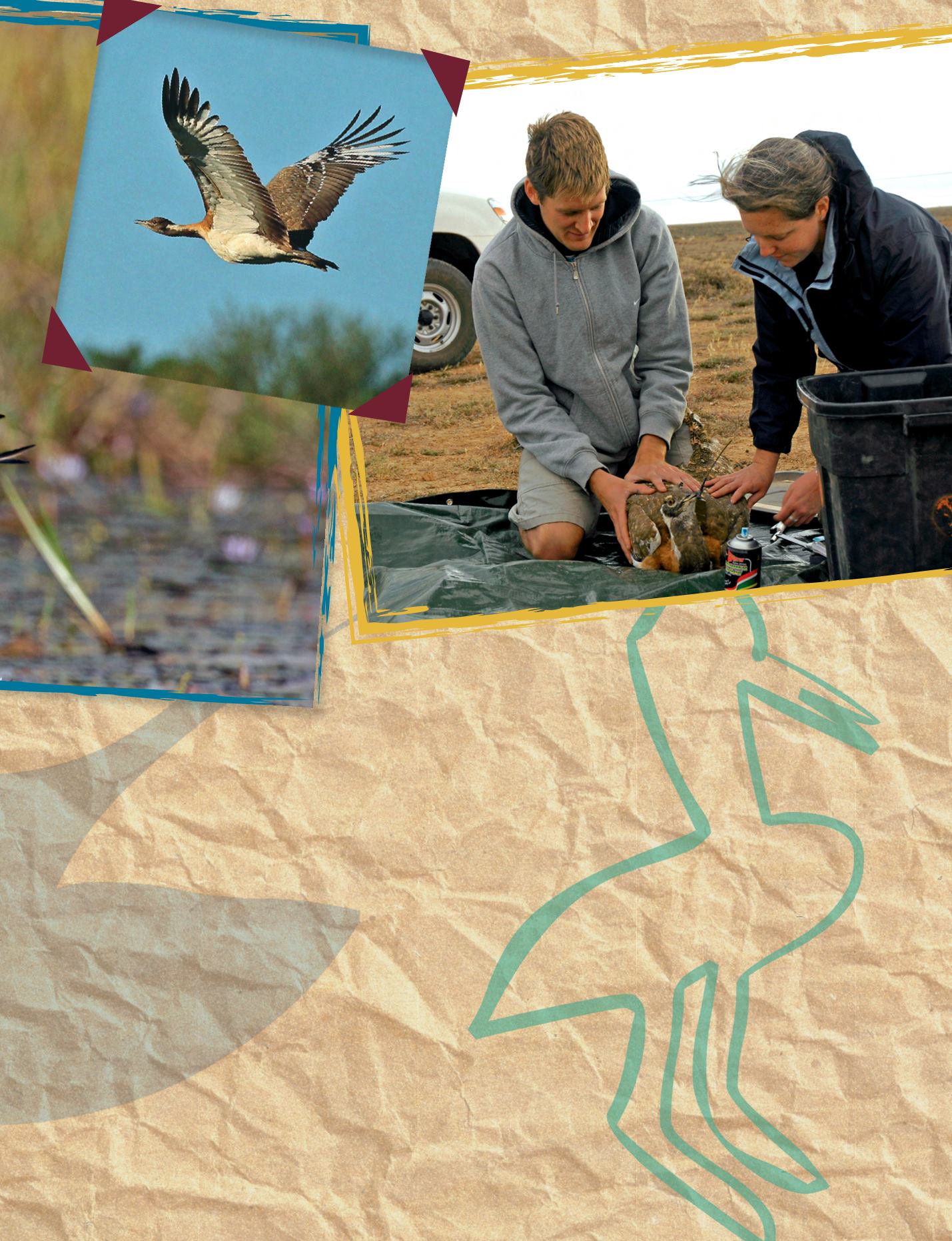
In collaboration with the Royal Society
for the Protection of Birds and Dalhousie
University, we track the movements of
several seabird species of conservation
concern breeding at the Tristan da Cunha
archipelago. Renowned for hosting the
world’s most remote human settlement,
the Tristan islands provide breeding
sites for millions of seabirds, including
several endemic species of albatrosses
and petrels, which are at risk from
accidental mortality on fishing gear.
Power line collisions
Recently, the Fitz initiated a tracking
project on the little known Ludwig’s
Bustard, a partially migrant and
nomadic bird of the semi-arid plains
of western South Africa and Namibia.
Power line collisions pose a huge threat
to these birds, killing tens of thousands
every year. The extent of power lines
criss-crossing their remote homeland
is already enormous, and continues
to increase. As a result, Ludwig’s
Bustard was recently listed as globally
Endangered, but what can be done to
help this bird in a country where the
needs of people without electricity must
be balanced with conservation?
Conservation benefits
Since 2010, GPS satellite transmitters
funded by Eskom, the national power
company, have been successfully
deployed on eight bustards. Taking
multiple precise positions for each
bird daily, these have generated an
enormous amount of data, and we now
have evidence for movements that were
previously only suspected, as well as
some that were completely unexpected,
such as fidelity to summer sites. These
birds are capable of flying over 200 km
in a day, but day-to-day they generally
range over a much smaller area.
Bustards are within 5 km of a power line
approximately half of the time and fly
mostly in the low light of early morning
and evening, so even fairly sedentary
birds are often at risk of colliding with
power lines.
Such high quality spatial data is crucial
to understanding the collision problem,
mitigating the dangers posed by existing
power lines and advising on the position
of future ones, and we are confident that
the use of this technology will translate
into real conservation benefits for one of
southern Africa’s special birds.
c
Jessica Shaw and Peter Ryan
Percy FitzPatrick Institute of African
Ornithology.
University of Cape Town Rondebosch
South Africa
i
Scientists Jessica Shaw and Ross Wheeler tagging a Ludwig Bustard
with an Argos/GPS battery powered PlatformTransmitter Terminal.
© Delia Davies
o
Flying Ludwig Bustard. This little known species is now considered
endangered. The main threat is collision with power lines.
© Peter Ryan
Biodiversity - 79


